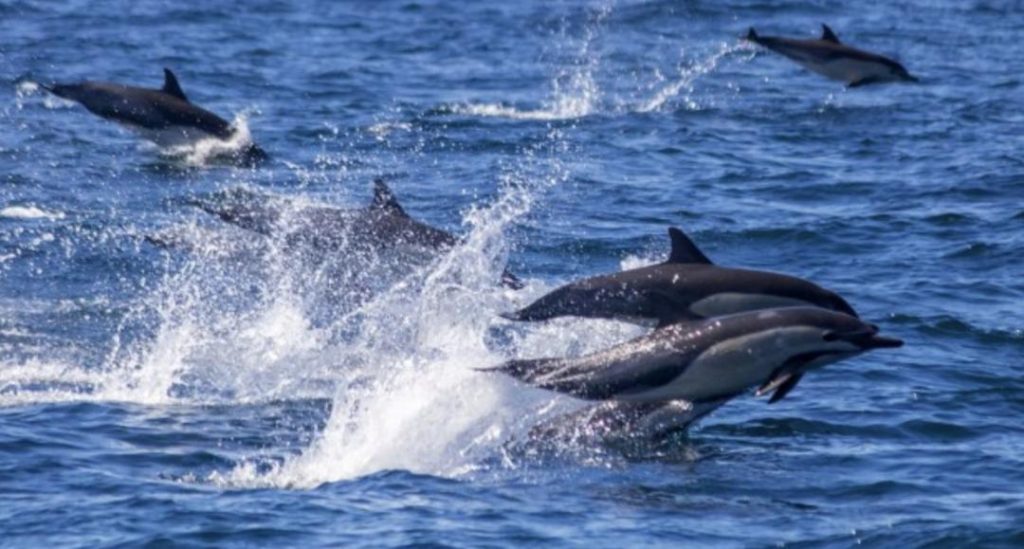
Dolphins & Whales Regularly Socialise with Each Other: Study
In a fascinating discovery, researchers from Griffith University have revealed that dolphins and whales frequently socialise with each other, engaging in playful interactions that are often mutual. The study, which examined videos and photographs of interactions between baleen whales and dolphins, covered 19 species across 199 separate events.
The findings, published in the journal Marine Mammal Science, provide new insights into the complex social dynamics between these two groups of marine mammals. The study’s authors analyzed data from various sources, including whale-watching tours, research expeditions, and photographs taken by tourists and scientists.
The researchers found that dolphins and whales engage in a range of social behaviors, from swimming together to playing and even hunting together. The most common interaction involved dolphins swimming near the whale’s head, with the whales often responding by changing direction or altering their speed.
Bottlenose dolphins were the most involved dolphin species, with 62% of all interactions involving these intelligent and social marine mammals. The researchers suggested that the bottlenose dolphins’ social nature and ability to adapt to different environments may have contributed to their high level of involvement in social interactions with whales.
The study’s lead author, Dr. Lars Bejder, emphasized the significance of the findings, stating, “Our study highlights the complexity of social interactions between dolphins and whales, which are often overlooked in favor of more visible and charismatic interactions, such as those between dolphins and humans.”
The researchers also noted that the social interactions between dolphins and whales are not limited to specific species or habitats. Instead, the study found that various species of dolphins and whales, including humpback whales, minke whales, and orcas, engaged in social interactions across different ecosystems.
One of the most striking aspects of the study was the level of playfulness exhibited by the dolphins and whales. The researchers observed dolphins and whales playing together, chasing each other, and even engaging in acrobatic stunts. These playful interactions were often mutual, with both species engaging in the same behavior.
The study’s findings have important implications for our understanding of marine mammal social behavior and conservation efforts. By recognizing the complex social dynamics between dolphins and whales, conservationists can develop more effective strategies for protecting these species and their habitats.
In addition, the study highlights the importance of interdisciplinary research, involving collaboration between scientists from different disciplines, including marine biology, ecology, and psychology. The researchers’ use of videos and photographs, as well as data from various sources, demonstrates the power of combining different approaches to gain a deeper understanding of complex social phenomena.
In conclusion, the study provides compelling evidence of the social nature of dolphins and whales, highlighting the importance of mutual playfulness and cooperation in their interactions. As we continue to learn more about these fascinating creatures, we are reminded of the importance of preserving their habitats and protecting their social dynamics.
Source:






